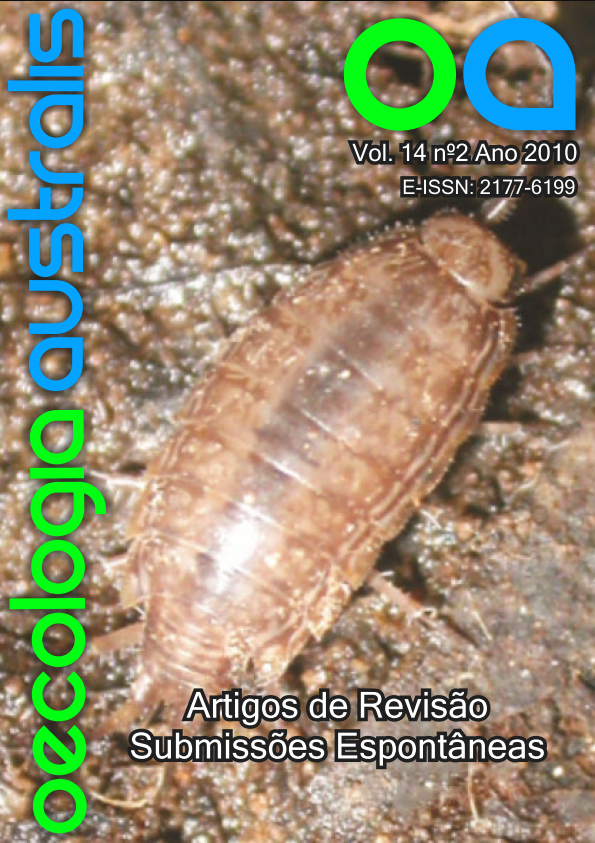POTENTIAL USE OF TERRESTRIAL ISOPODS AS BIOMONITORS IN THE RESTORATION ECOLOGY.
Keywords:
Bioindicators, detritivores, soil fauna, phytoremediation, heavy metals, restoration ecology.Abstract
Restoration Ecology aims at the restoration of degraded environments and seeks an integrated management of its resources. It has been considered as a long-term solution, not only to reconstitute the original landscape, but also to give back functionality to these enviromnments. Using tools as phytoremediation, Restoration Ecology aims to decrease or eliminate the negative effects of contaminants in polluted areas. To be effective, restoration projects need both short-term and long-term biomonitoring, and for that matter the knowledge on bioindicator organisms is required. Terrestrial isopods are macroinvertebrate detritivores that can bioaccumulate large quantities of heavy metals. They have been long used as models in the terrestrial ecotoxicology and therefore have a great potential to be employed as biomonitors during the phytoremediation of polluted lands. In Brazil, knowledge on the species' biology, ecology and distribution is still very incipient, nonetheless it is possible to identify two species with potential to be used as biomonitors. Atlantoscia floridana (Philosciidae) and Balloniscus sellowii (Balloniscidae) are Neotropical species with large geographical distribution in Brazil and show an enhanced capacity to colonize degraded lands. In the future, with a better knowledge on these species' physiology, the combination of phytoremediation and terrestrial isopods as biomonitors may enhance the ecological restoration of lands contaminated by heavy metals.


